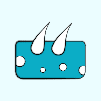Dengue fever is the most critical mosquito-spread viral disease and a primary international public health concern. It is an infectious disease found in tropical and sub-tropical regions around the world, predominantly in urban and semi-urban areas. Dengue fever, also known as break-bone fever, is an infectious disease caused by the dengue virus.
Causes of Dengue Fever
Dengue viruses are spread to people through the bite of an infected Aedes species (Ae. aegypti or Ae. albopictus) mosquito. Dengue fever or DF/DHF is caused by the dengue virus which belongs to genus Flavivirus family. Flaviviridae and includes serotypes 1, 2, 3 and 4 (Den-1, Den-2, Den-3 and Den-4).
When a person has had classic dengue (i.e. infection by one serotype),a second infection later by another serotype increases the likelihood of suffering from DHF

Ayurveda’s Perspective on Dengue
According to Ayurveda, Dengue fever can be correlated with a type of Jwara or fever, and can be put under the category of Abhishangaja Jwara with predominantly Pittaja in the pathological ground. The complications represent Raktaja and Sannipataja Jvara. Dengue has been described as “Dandaka Jwara” in Madhava Nidan with a clear description that a mosquito is the primary cause for the spread of this fever Dandaka Jwara.
In this fever, the patient experiences severe pain in the bones so it is called Dandaka jwara or Break Bone fever. As per Charak Samhita, it can be classified into Agantuja Jwara – meaning caused due to external factors, the Aedes mosquito in this case. Also, Charaka mentions the prognosis of Dhatugata Jawara, especially in Asthi dhatu takes more time to cure and is treated with difficulty (Yapya). Also, Ch.Samhita.Chikitsa Sthana Chap 23 mentions Visha Chikitsa in which Mosquito bite is mentioned under Jangam Visha with symptoms such as Kandu (itching), Shotha (oedema) and Ruja (pain).

How Does Dengue Fever Spread?
Mosquito breeding can occur in any water-storage containers, such as desert coolers, flower vases, coconut shells, construction sites, overhead uncovered or partially covered water tanks, discarded buckets, rubber tires, utensils, and large containers used for collecting rainwater which is not emptied and cleaned periodically. The mosquitoes rest indoors on various objects, in closets, and in other dark places. Outside, they rest where it is cool and shady. The outbreaks of DF/DHF are most likely to occur in the post-monsoon period when the breeding of the mosquitoes is highest.






